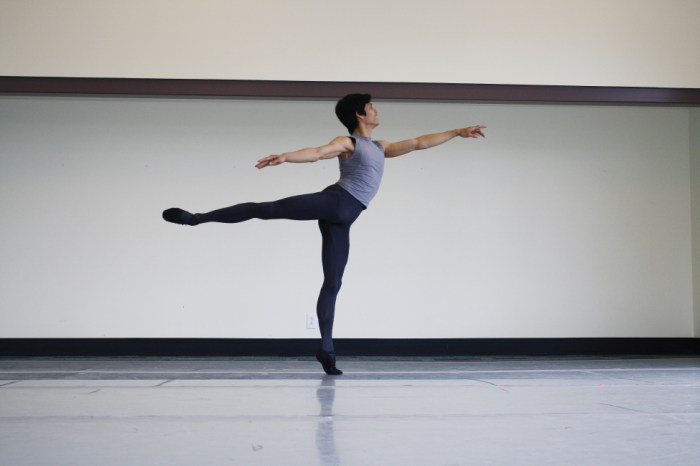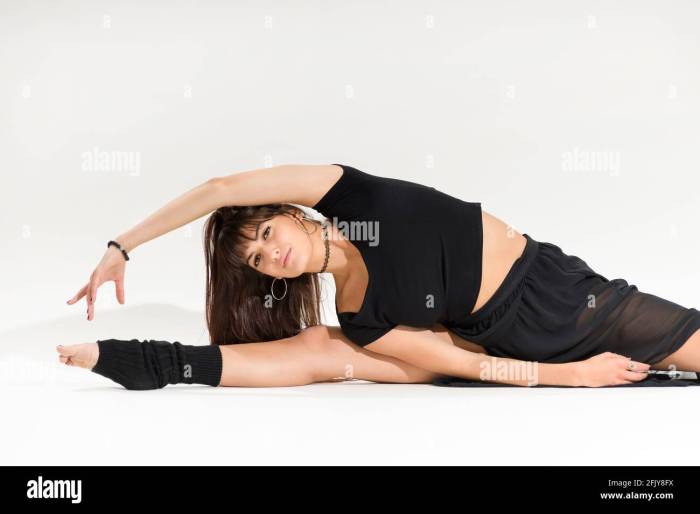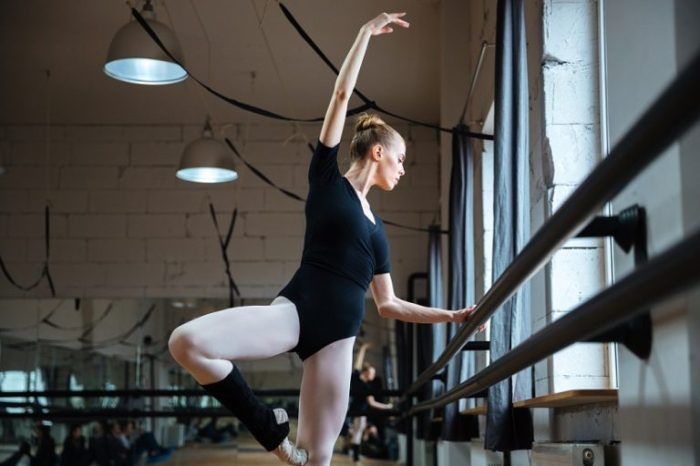As the supple limbs of a dancer take center stage, this piece invites readers into a world of grace and athleticism, exploring the physical attributes, expressive capabilities, symbolism, and training techniques that define these remarkable instruments of movement.
The dancer’s limbs possess an extraordinary range of motion and flexibility, allowing for breathtaking movements that showcase their suppleness. Through rigorous physical conditioning, dancers achieve the ability to execute intricate steps and create mesmerizing shapes with their bodies.
Physical Attributes of a Dancer’s Limbs

Dancers possess exceptional flexibility and range of motion in their limbs, allowing them to execute intricate and graceful movements with ease. Their joints are highly mobile, enabling them to bend and extend their limbs to extreme angles.
Range of Motion
- Ballistic Movements:Dancers can perform explosive, high-energy movements that involve rapid changes in direction and velocity, such as leaps and turns.
- Controlled Movements:They also have the ability to execute slow, controlled movements with great precision, such as arabesques and adagios.
Physical Conditioning
Achieving such suppleness requires rigorous physical conditioning and training. Dancers engage in regular stretching exercises to increase their joint flexibility and range of motion. They also strengthen their muscles through exercises like pliés and relevés, which help stabilize and control their limbs during complex movements.
Expressive Capabilities of the Limbs

The limbs of a dancer are not merely physical attributes; they are expressive tools that convey emotions, narratives, and cultural influences through movement. Dancers use their limbs to create shapes and lines, to express emotions, and to communicate cultural stories.
Emotional Expression
The limbs of a dancer can convey a wide range of emotions. A dancer can use their arms to express joy, sorrow, anger, or love. They can use their legs to convey strength, fragility, or grace. The way a dancer moves their limbs can also create a sense of tension or release, anticipation or resolution.
Narrative Expression
The limbs of a dancer can also be used to tell stories. A dancer can use their limbs to create characters, settings, and events. They can use their movements to tell a story about a journey, a relationship, or a historical event.
The way a dancer uses their limbs can create a sense of time and place, and can transport the audience to another world.
Cultural Expression
The limbs of a dancer can also be used to express cultural influences. A dancer can use their movements to reflect the culture of their country or region. They can use their limbs to create traditional dances, or to create new dances that are inspired by their culture.
The way a dancer uses their limbs can create a sense of identity and belonging, and can connect the audience to a particular culture.
The supple limbs of a dancer move with grace and fluidity, defying gravity. This agility is a testament to the hours of dedicated practice and the willingness to learn from mistakes. Just as dancers strive to perfect their craft, so too should we embrace the lessons that failure brings.
Angel B. Perez reminds us that failure is an essential part of the learning process, and that it is through our missteps that we truly grow. With each fall, we gain a deeper understanding of our abilities and the resilience to keep moving forward.
And so, like the supple limbs of a dancer, we too can learn to navigate the challenges of life with grace and perseverance.
Symbolism and Interpretation of Limbs in Dance

The supple limbs of a dancer are not merely instruments of movement; they are also powerful symbols that can convey a wide range of meanings. Choreographers and dancers have long used the limbs to represent abstract concepts, tell stories, and explore the human condition.
In many cultures, the dancer’s limbs are seen as a symbol of grace, beauty, and athleticism. The dancer’s ability to move with fluidity and precision is often seen as a reflection of their inner beauty and strength.
Limbs as Metaphors
The limbs of a dancer can also be used to represent abstract concepts. For example, the arms can be used to represent the wings of a bird, the legs can be used to represent the roots of a tree, and the hands can be used to represent the petals of a flower.
Choreographers have used these metaphors to create dances that explore themes such as freedom, growth, and transformation.
Limbs as Storytelling
The limbs of a dancer can also be used to tell stories. For example, a dancer might use their arms to mime the actions of a character, or they might use their legs to create the illusion of a journey.
Choreographers have used these techniques to create dances that tell stories about love, loss, and redemption.
Cultural and Societal Interpretations
The cultural and societal interpretations of the dancer’s limbs vary widely around the world. In some cultures, the dancer’s limbs are seen as a symbol of purity and innocence, while in other cultures they are seen as a symbol of sensuality and eroticism.
These different interpretations reflect the different values and beliefs of the cultures in which they are found.
Techniques and Training for Supple Limbs

Maintaining supple limbs is crucial for dancers to execute graceful and fluid movements. This requires a dedicated training regimen that incorporates stretching, strengthening, and flexibility exercises.
Training Regimen
To develop supple limbs, dancers should follow a comprehensive training regimen that includes the following:
- Dynamic Stretching:Warm up the muscles and prepare them for movement by performing gentle, flowing stretches that involve slow, controlled movements.
- Static Stretching:Hold stretches for an extended period to increase flexibility. This helps lengthen muscles and improve range of motion.
- Strengthening Exercises:Build muscle strength to support and control flexible limbs. This includes exercises that target the core, legs, and arms.
- Yoga and Pilates:These practices incorporate flexibility exercises, body awareness, and balance, which can enhance overall limb suppleness.
Stretching and Strengthening Exercises, The supple limbs of a dancer
The following table provides a comparison of different stretching and strengthening exercises for enhancing flexibility:
| Stretching Exercise | Strengthening Exercise |
|---|---|
| Hamstring Stretch | Glute Bridge |
| Quad Stretch | Squat |
| Calf Stretch | Calf Raise |
| Chest Stretch | Push-up |
| Triceps Stretch | Triceps Extension |
Proper Exercise Techniques
To ensure effectiveness and prevent injuries, it is essential to perform exercises with proper technique. Here are some guidelines for executing exercises that target limb suppleness:
- Engage the Core:Keep the core muscles engaged throughout the exercise to maintain stability and prevent lower back pain.
- Breathe Regularly:Maintain steady breathing during exercises to improve circulation and oxygenation.
- Hold Stretches Gently:Avoid overstretching. Hold stretches comfortably for the recommended duration to gradually increase flexibility.
- Listen to Your Body:Pay attention to your body’s signals. Stop if you experience any pain or discomfort.
- Be Patient and Consistent:Developing supple limbs takes time and consistent effort. Practice regularly to see results.
Questions Often Asked: The Supple Limbs Of A Dancer
What physical attributes contribute to the suppleness of a dancer’s limbs?
Flexibility, range of motion, and strength are key physical attributes that enable dancers to achieve suppleness in their limbs.
How do dancers use their limbs to convey emotions and narratives?
Dancers use their limbs to create shapes, lines, and movements that express a wide range of emotions and tell stories.
What is the cultural significance of the dancer’s limbs?
In many cultures, the dancer’s limbs are seen as symbols of grace, beauty, and athleticism, and their movements reflect cultural and historical influences.

